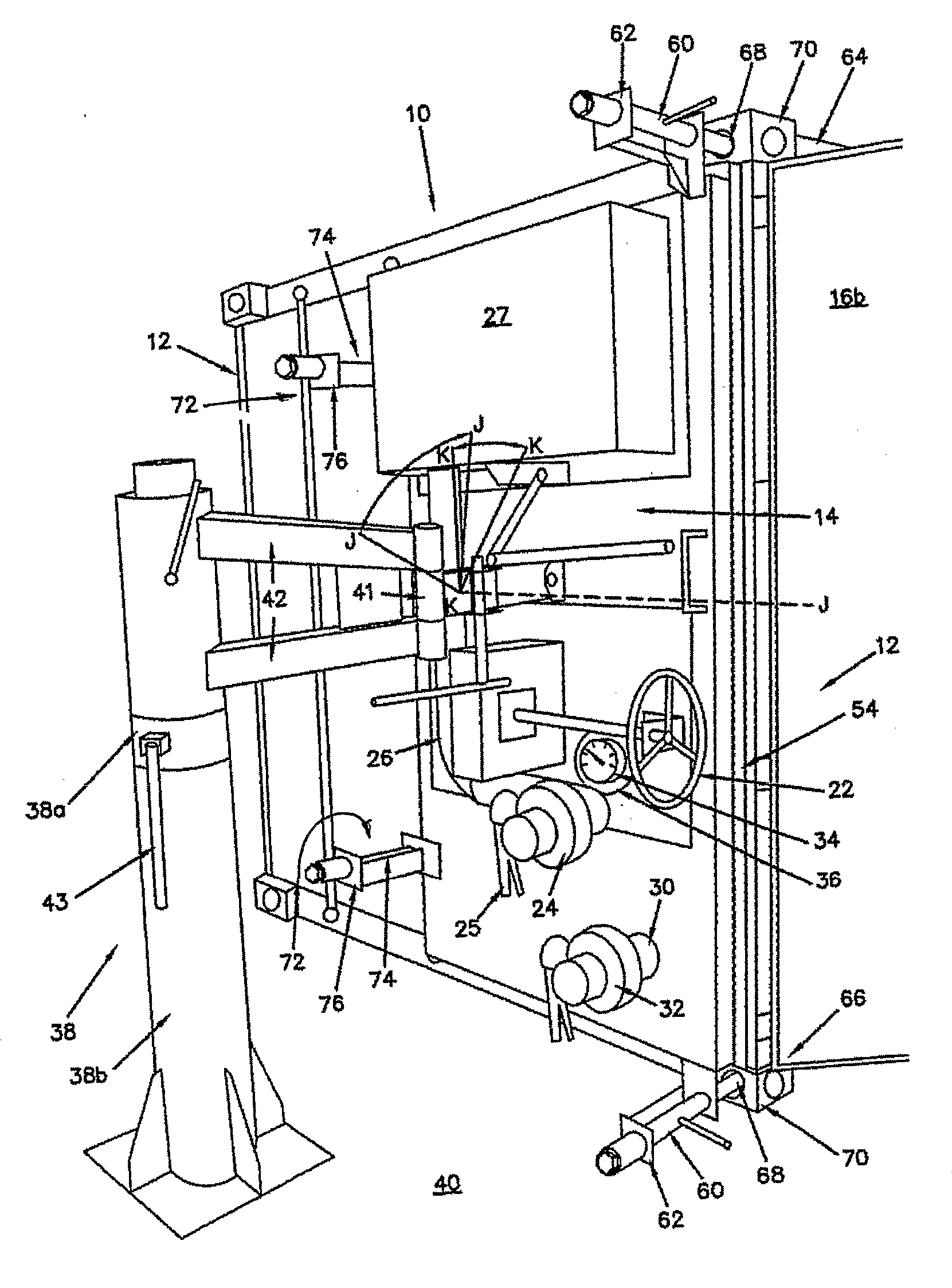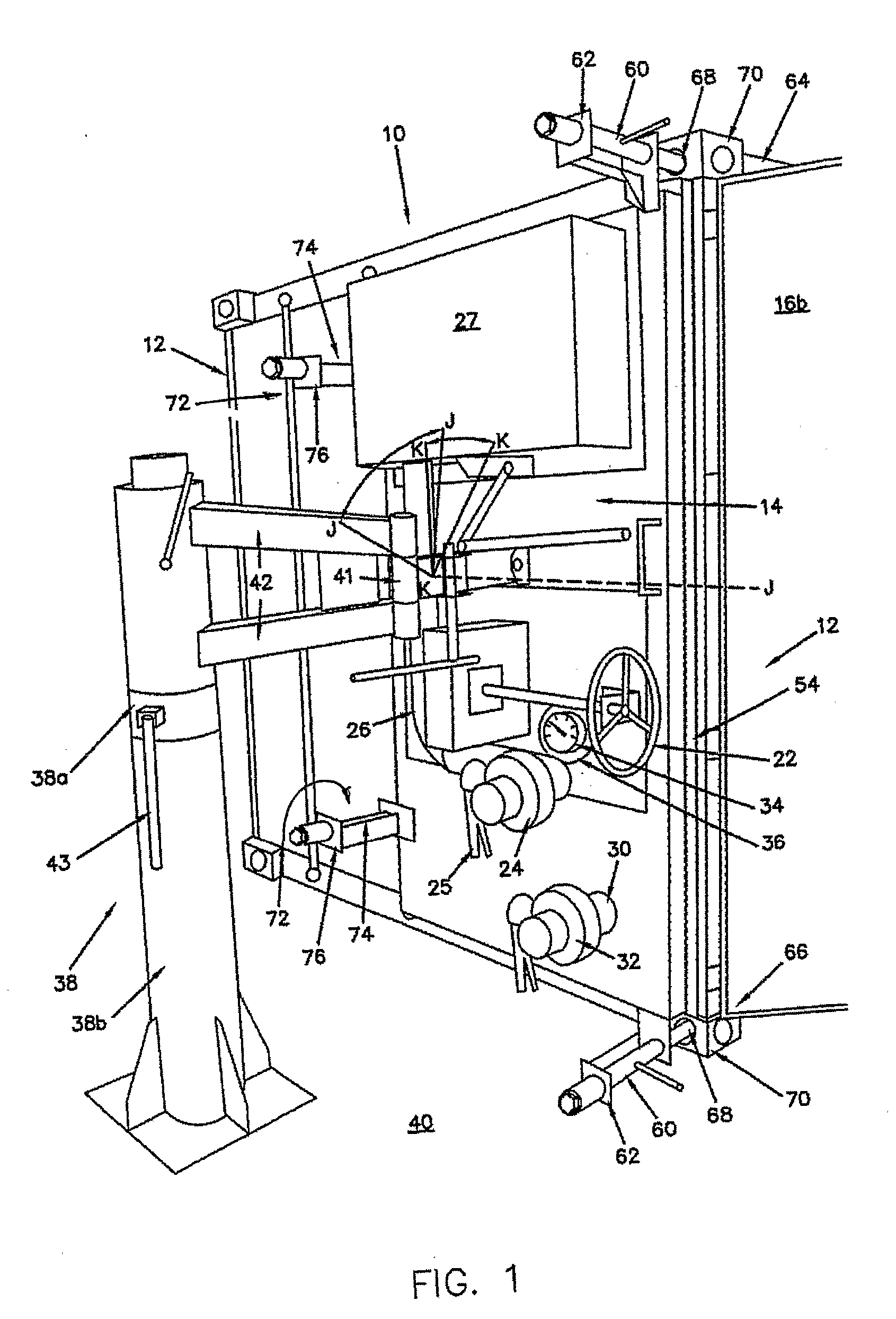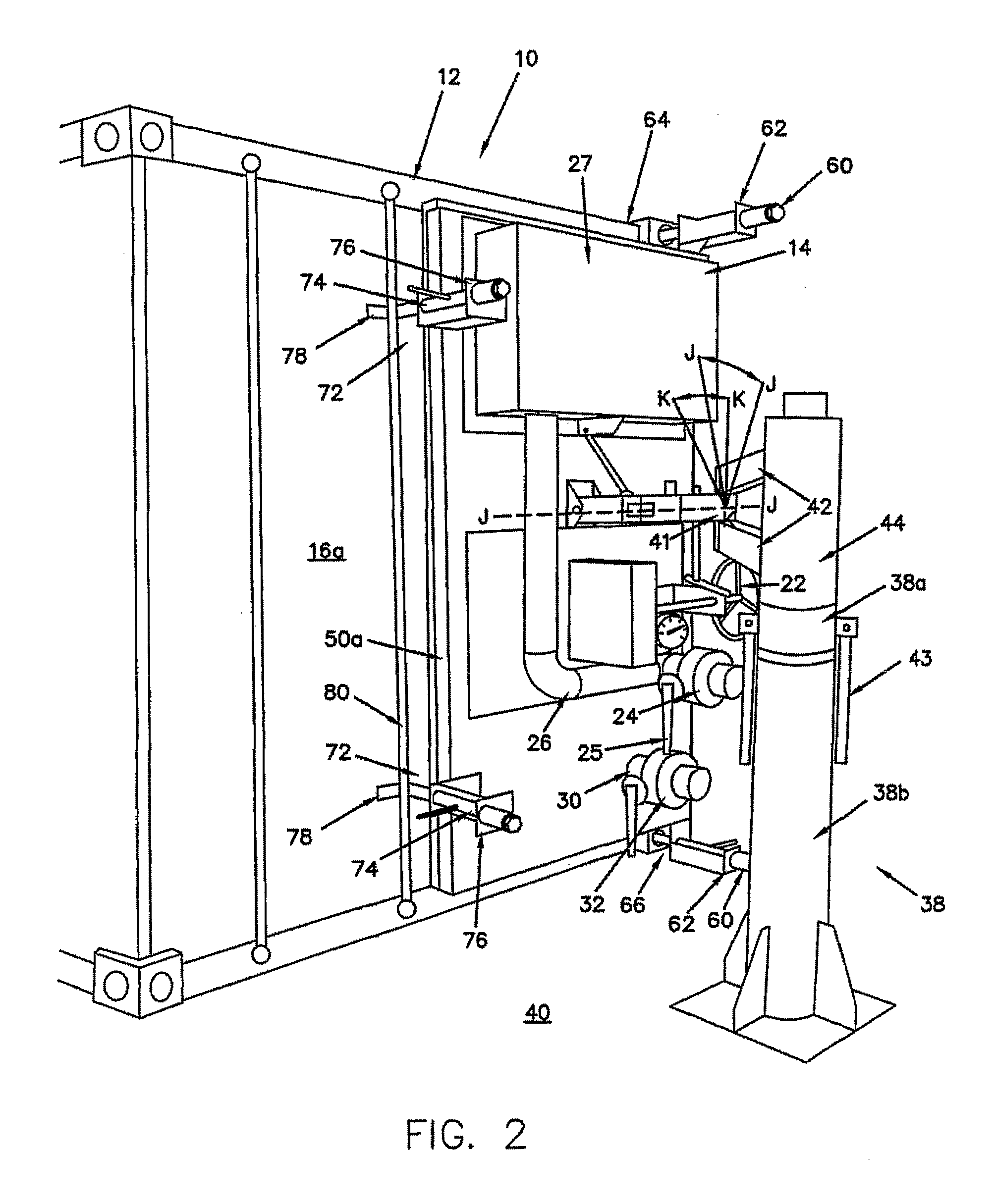Residual gas removal method
- Summary
- Abstract
- Description
- Claims
- Application Information
AI Technical Summary
Benefits of technology
Problems solved by technology
Method used
Image
Examples
Embodiment Construction
[0064] As shown in the Figures, various embodiments of a residual gas removal apparatus 10 are shown that are arranged to be operatively coupled to an enclosure in the form of a conventional shipping container 12, although in other embodiments the apparatus can be coupled in use to an opening in any type of enclosure, for example a silo, a shed, warehouse and rooms of any dimension. A typical opening into the enclosure can include a doorway, a window, an inspection port or a customised portal to accommodate the apparatus 10.
[0065] Referring to FIGS. 1 to 3, the apparatus 10 comprises a rectangular-shaped panel 14 which is of a size that can be coupled in use to the container 12 once an end door 16 of the container 12 has been opened. Embodiments of the panel 14 have two standard height sizes (8 foot, 6 inches, and 9 foot, six inches) which correspond closely to the standard door height of conventional shipping containers available in the world today. In use the panel 14 is moved in...
PUM
 Login to View More
Login to View More Abstract
Description
Claims
Application Information
 Login to View More
Login to View More - R&D
- Intellectual Property
- Life Sciences
- Materials
- Tech Scout
- Unparalleled Data Quality
- Higher Quality Content
- 60% Fewer Hallucinations
Browse by: Latest US Patents, China's latest patents, Technical Efficacy Thesaurus, Application Domain, Technology Topic, Popular Technical Reports.
© 2025 PatSnap. All rights reserved.Legal|Privacy policy|Modern Slavery Act Transparency Statement|Sitemap|About US| Contact US: help@patsnap.com



